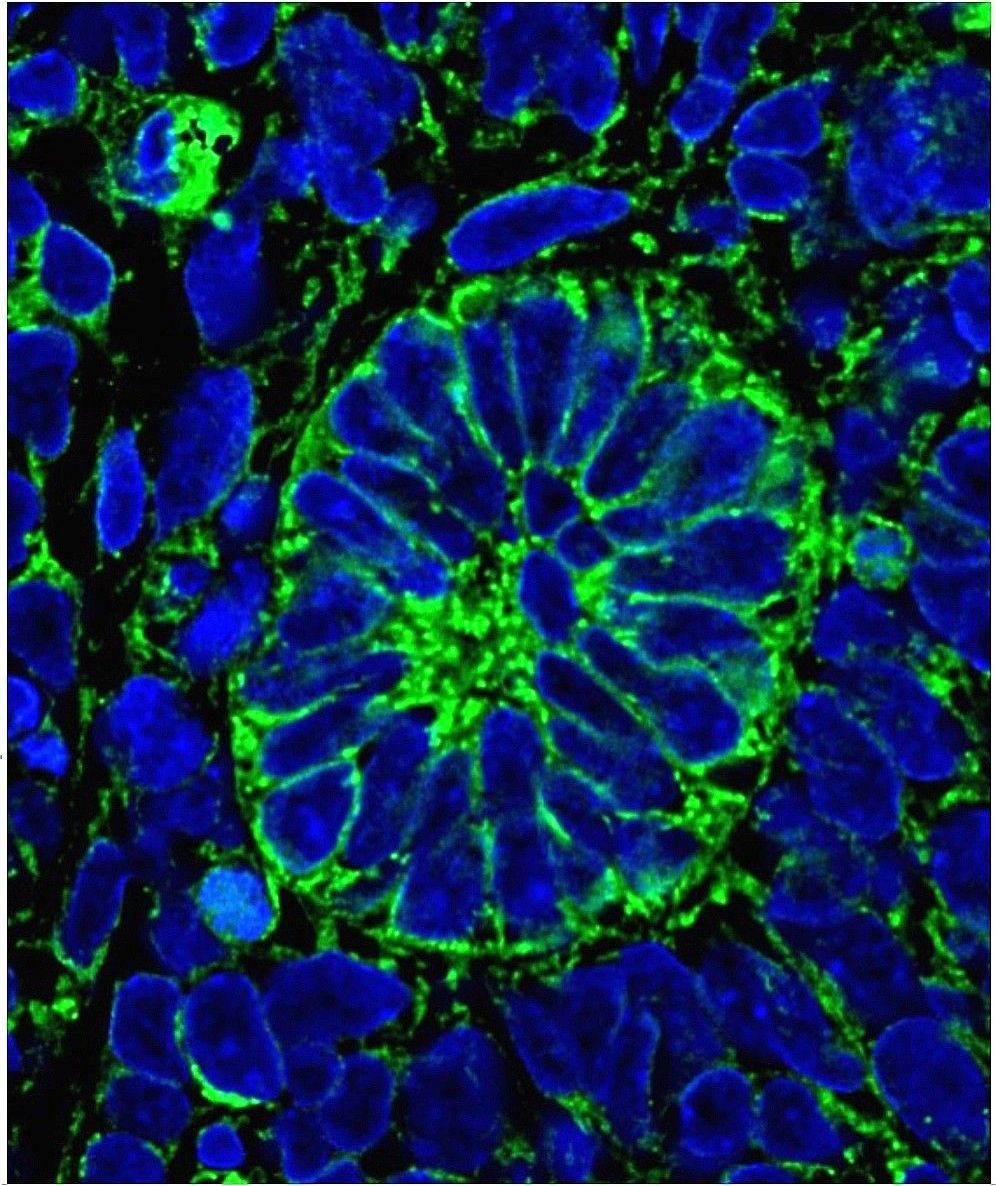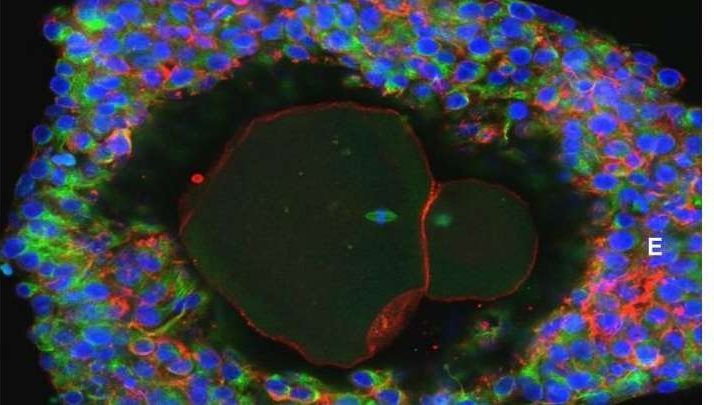SGLT2 inhibitors, a promising class of diabetes drugs, were shown to significantly lower the rates of heart failure and death in the large CVD-REAL study.



Summary: A team of scientists at Tongji University just announced a breakthrough in regenerating human lungs using stem cells, improving lung function in patients. [This article first appeared on the website LongevityFacts. Author: Brady Hartman. ]
A team of researchers from Tongji University in China announced what they say is a breakthrough in treating lung diseases by regenerating tissue using stem cell transplantation.
In a pilot clinical trial, the treatment proved effective at repairing the lung tissue of two patients suffering from lung diseases, who showed improvements in both symptoms and on CT scans, say the researchers. Zuo Wei is a Tongji University professor who led the research team and says.

Summary: A research team at UCSD discovered a key enzyme that plays a role in burning calories during both obesity and dieting and sabotages weight loss. Moreover, these scientists may have just found an existing drug that counteracts this enzyme. [This article first appeared on the website LongevityFacts.com. Author: Brady Hartman. ]
Ever wonder why dieting often leads to a plateau in weight loss? It happens because the body is trying to maintain a steady weight by regulating the expenditure of energy. How this happens has remained a mystery until now.
In a paper published on February 8 in the journal Cell, a team of researchers at the University of California San Diego (UCSD) School of Medicine led by Alan Saltiel, Ph.D. has identified a key enzyme that sabotages weight loss efforts during dieting. Dr. Saltiel is the director of UCSD’s Institute for Diabetes and Metabolic Health, and says.

The AHA names evolocumab — a new PCSK9 inhibitor — as one of the top 10 heart disease and stroke advances of 2017 in its annual list published on February 8, 2018. However, this novel cholesterol-lowering drug carries a big price tag.
Summary: The AHA names the PCSK9 inhibitor evolocumab as one of the top 10 heart disease and stroke advances of 2017 in its annual list published on February 8. However, this novel cholesterol-lowering drug carries a big price tag. [This article first appeared on LongevityFacts. Author: Brady Hartman. ]
The AHA named the cholesterol-lowering drug evolocumab in its annual top 10 lists of major advances in heart disease and stroke research, published on February 8. Evolocumab belongs to a class of cholesterol-lowering drugs called PCSK9 inhibitors and is injectable drug marketed by Amgen under the brand name Repatha. The two-year FOURIER study reported that evolocumab reduced high cholesterol levels and had few adverse effects.
The FOURIER study, published in the New England Journal of Medicine, found that evolocumab can significantly reduce heart attacks and strokes among high-risk patients. The study included more than 27,000 patients who were randomized into taking evolocumab or a placebo, and showed that the new drug has a clear benefit over statins in reducing LDL, the bad cholesterol in patients. FOURIER showed that the new medication cut the risk of having a heart attack, stroke or other cardiovascular events by 20% when added to intensive statin therapy. The study was paid for by Amgen and reported that evolocumab lowered LDL by about 60%, to a median of 30 mg/dL.

In a first for medical science, scientists in the UK have successfully created functioning human kidney tissue that produces urine.
Summary: In a first for medical science, researchers in the UK have successfully created functioning human kidney tissue that produces urine. [This article first appeared on the website LongevityFacts. Author: Brady Hartman. ]
In a first for medical science, researchers have successfully created human kidney tissue within a living organism which can produce urine.
The study led by professor Sue Kimber and professor Adrian Woolf from the University of Manchester in the UK marks a significant milestone in the development of kidney disease treatments. The scientists published their results on February 8 in the journal Stem Cell Reports.

Researchers just reported promising rapamycin clinical trial results in the first of its kind test of the drug’s safety and anti-aging effects on healthy Senior adults. [This article first appeared on LongevityFacts. Author: Brady Hartman. ]
A rapamycin clinical trial using healthy adults recently completed and reported the drug to be safe over the short-term when used for anti-aging purposes.
This clinical trial of rapamycin was one of the first testing the compound’s safety as an anti-aging drug in healthy Seniors. The clinical trial consisted of 25 healthy older adults 70–95 years between the ages of 70 to 95. The study participants took either a placebo or 1mg rapamycin daily for eight weeks. The main finding of the study was that the drug was safe, without significant side effects. The researchers published their results on February 3 in the journal Experimental Gerontology and concluded.

Scientists have successfully produced human kidney tissue within a living organism which is able to produce urine, a first for medical science.
The study led by Professors Sue Kimber and Adrian Woolf from The University of Manchester, signifies a significant milestone in the development of treatment for kidney disease.
The Medical Research Council and Kidney Research UK funded project is published in the journal Stem Cell Reports.

For the first time, scientists have grown human eggs to full maturity in a lab, in a move that could open the doors to new fertility treatments.
This monumental feat was achieved by scientists at the University of Edinburgh in Scotland. Their research is published in the journal Molecular Human Reproduction. A similar venture has previously been achieved with mouse eggs, even using the lab-grown eggs to create live mice offspring. However, even after decades of work, researchers have always struggled with replicating the research with human cells.
The lab-grown human eggs start off life, so to speak, as immature egg cells that were removed from ovarian tissue at their earliest stage of development. Scientists then cultured the immature egg cells in a multi-stage process over a few weeks, sensitively controlling the fine balance of oxygen, hormones, and necessary proteins. This process matured the immature egg cells to the same stage “normal” eggs would be when released from the ovaries.

This pillow is dedicated to reducing acid reflux. This is the MedCline Reflux Relief System. It reclines your body, so stomach acid can’t reach your esophagus.
Liz Jassin, Business Insider:
I’ve had acid reflux for five years. I went to the doctor, and they gave me a long list of foods to cut out of my diet to reduce my reflux symptoms. No chocolate. No alcohol. No coffee. Which, I can’t do that. No spicy foods, to cut acidic foods. It was a ridiculous list that I couldn’t cut out.